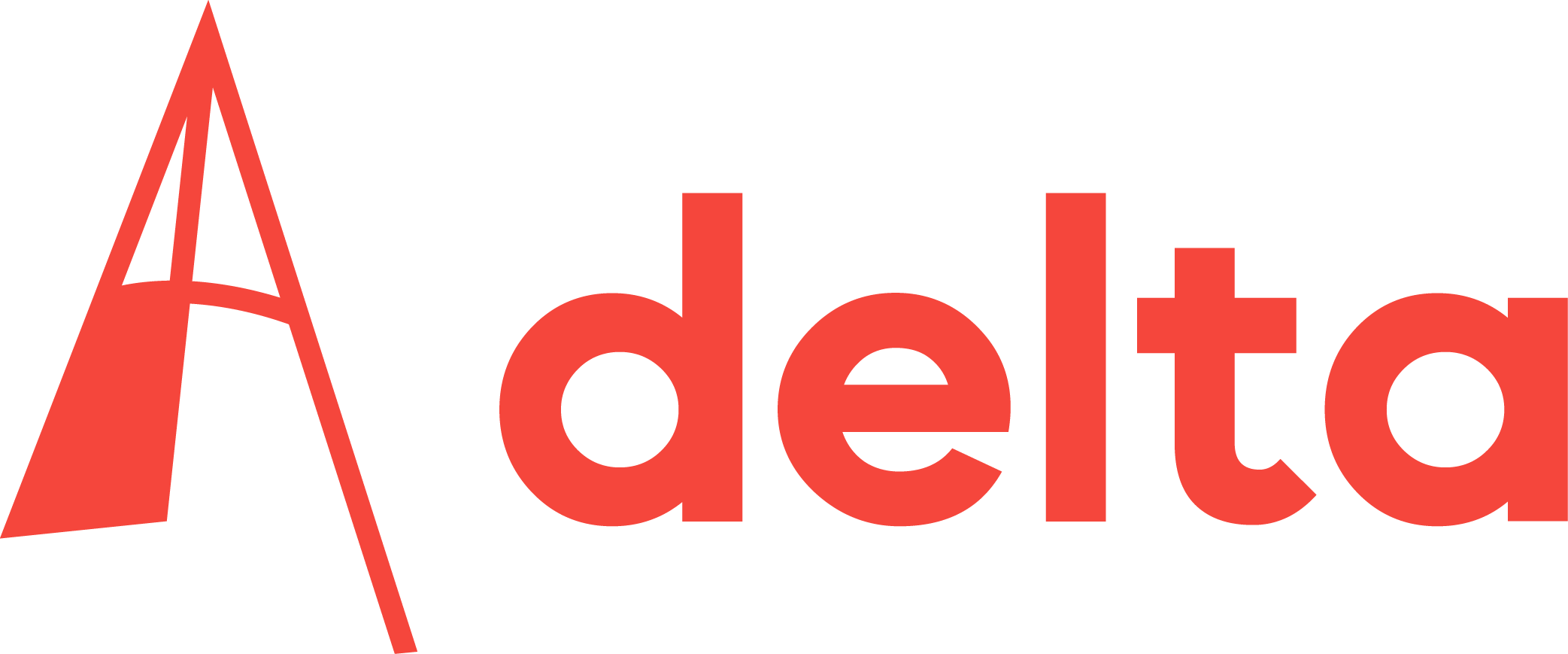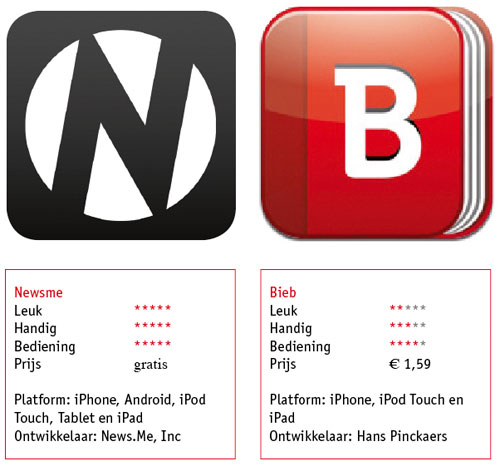De boeken die we hebben gelezen, de vakanties die we hebben geboekt, de liefdes die we hebben gescoord en verloren: alles zullen we eerlijk delen via de smartphone.
Kijk, daar hebben we wat aan: Bieb. Inderdaad, precies wat je verwacht bij de naam: een app die je pushberichten stuurt om je eraan te herinneren dat de leentermijn van je boeken verstrijkt. Tja, dat is niks wat je eigen smartphone-agenda niet zelf al doet. Maar! Sinds kort kun je behalve je leengeschiedenis inzien en kijken of boeken voorradig zijn, ook boekrecensies schrijven en lezen in de app. Oprah had er een puntje aan kunnen zuigen met haar Book Club. De meeste openbare bibliotheken zijn aangesloten bij de app, en dat maakt dat je dus je gegevens bij je eigen bieb, én die in bijvoorbeeld de woonplaats van je ouders kunt inzien. Handig! Want wie zegt dat hij nooit een boete heeft openstaan op zijn biebpasje, jokt. Net als degene die beweert dat hij nog nooit een ongelooflijke teleurstelling heeft geleend trouwens.
En als je dan toch je mening aan het delen bent, doe het dan meteen goed. Via Newsme, dus. Sociaal netwerken is nog nooit zo efficiënt geweest. De app hoest alle nieuwe verhalen op van links op je Facebook- en Twitteraccount, zonder dat je op die afzonderlijke sites hoeft in te loggen. Alle reden om nóg verslaafder te raken aan dat kleine schermpje, maar aan de andere kant neemt het checken van nieuwe feeds zo wel veel minder tijd in beslag. Kun je nog eens een boek lezen.
Massive chunks of ice, the North Pole, freezing temperatures? That’s perhaps the first thing that comes to mind when one thinks of the Arctic. Or perhaps we are now more inclined to think of melting glacial caps or changing sea currents pattern or for that matter the effects of global climate change.
Although many polar scientists continue to intensely study the changes occurring in the high Arctic, a small group of students from TU Delft’s Energy Club are doing their bit by contributing to the data collection supporting climate change research.
The sea ice cover is thinning and decreasing, although estimates of when the Arctic Ocean will be ice-free during summer months vary. There’s no consensus in the scientific community, though the downward trend is clear. Sea ice disappears either by melting or transportation. Most ice disappears when it gets carried away to the edges, outside of the Arctic basin, by sea currents and winds. This important mechanism needs to be better understood and monitored to study the influences on climate change and global warming.
Every year polar scientists head to the polar region to work in the field for weeks and months, measuring sea ice thickness and dynamics. The efforts involved are enormous and only a few areas are explored regularly. The Cold Facts programme adds capacity to the data collection by providing instruments and protocols to the polar explorers who travel to remote areas where hardly anyone comes.
The Cold Facts is mentored by Marc Cornelissen, a Dutch polar explorer who works with the World Wildlife Foundation and other polar scientists. He asked Delft’s Energy Club to coordinate the design and production of an unmanned, lightweight weather station, an important asset for his programme. Polar explorers can deploy such stations in scientific ‘white spots’, which are areas in the ocean that have layers of sea ice on which weather stations can be positioned. Once deployed the station provides meteorological and daily positional reports, actually monitoring sea ice movements and the key factors driving such movements: air pressure and wind.
The station transmits its data via satellite as it drifts along with the ice flows. Cornelissen and others have made previous models, but there is room for improvement. What Cornelissen wants is a station that’s lighter, more reliable and easier to deploy. This new station will incorporate and upgrade already tested electronics, building upon known transmitters and sensors. The controller, power supply and mechanical construction are to be redesigned as well. All areas where Delft’s student project team lends a helping hand.
Creativity
The Cold Facts team is a multidisciplinary international team comprised of students from mechanical engineering, sustainable energy and technology, electrical, electronics and industrial design engineering. One aspect of the project that binds and attracts them all is the adventure of making something that will be deployed on the North Pole.
The team has been working on the project since January 2011 and plans to finish it by late April 2011, meeting each week in the faculty of Industrial Design Engineering to discuss the project’s progress among themselves and with Cornelissen. During these meeting the students brainstorm, present ideas, thrash out details of problems and discuss models of physical prototypes they’ve built. Professor Christos Spitas and Dr Mohammadreza
Rajabalinejad from the Industrial Design Engineering faculty also supervise the project and provide valuable inputs.
Although the students are extremely excited by the thought of polar travel, the project’s limited resources wouldn’t allow for it, so for now the students do their part from relatively balmy Delft, but always with the North Pole’s extreme weather conditions firmly in mind.
“Working for polar expeditions and for extreme climates is challenging,” says Gaspard Bos, a Dutch student from Industrial Design engineering. “The project’s a nice combination of a sustainable cause and an opportunity to really come up with an innovative weather station that involves lots of engineering for an extreme climate.”
Cornelissen, a TU Delft alumnus, is counting on the students’ creativity and is excited about the way the project has shaped up thus far. His ultimate goal is to devise a well-designed, meaningful technical solution for a weather station that he’s been working on since 2004. There are also plans in place to involve and pitch the Cold Facts programme to other corporate sponsors, thus raising awareness and funding for more research in the Arctic.
For the Delft-bound students, visualizing the prototype is an especially difficult nut to crack, as the only available data comes pictures and videos Cornelissen takes at the artic locations. The team comes up with wild concepts but then must always critically examine the prototype idea in light of the harsh weather conditions, threats of polar bears, and ease of deployment by the polar explorers – all unique challenges to a North Pole project.
Industrial engineering student, Amit Gudadhe, says: “The biggest advantage for us is having a client like Cornelissen, who has been completely involved in the team. He’s always ready to extend a helping hand and has lots to tell us based on his experience. Learning from previous models and existing technology and looking at new state of art technologies is also important.” The students know the complexity of the problems very well, but perhaps equally important for them is being in a team where they learn firsthand about the benefits of the cross-functionality of disciplines, while also learning how to deal and even benefit from the varied and sometimes conflicting opinions that arise when confronted with different aspects of the project.
“There’s lots of diversity in the team, which is often helpful, especially in this case, as lots of specialized knowledge in various fields is required,” says team member Brhamesh Alipuria. “We have people whose opinions are valued more when dealing with certain specialised knowledge, but the final decisions are taken as a team. Till now it’s been easy to coordinate.”
Exploring the Arctic on foot is a dream that all the project team members nurture, but for now it will be their brainchild weather station that will be the traveller.



Comments are closed.